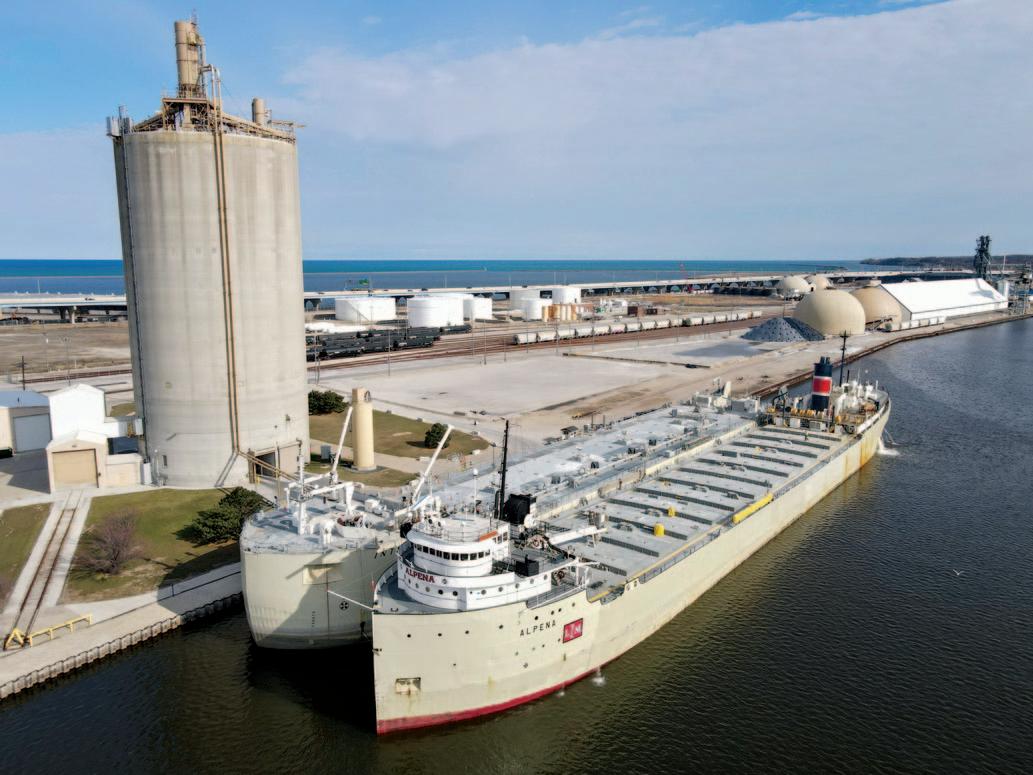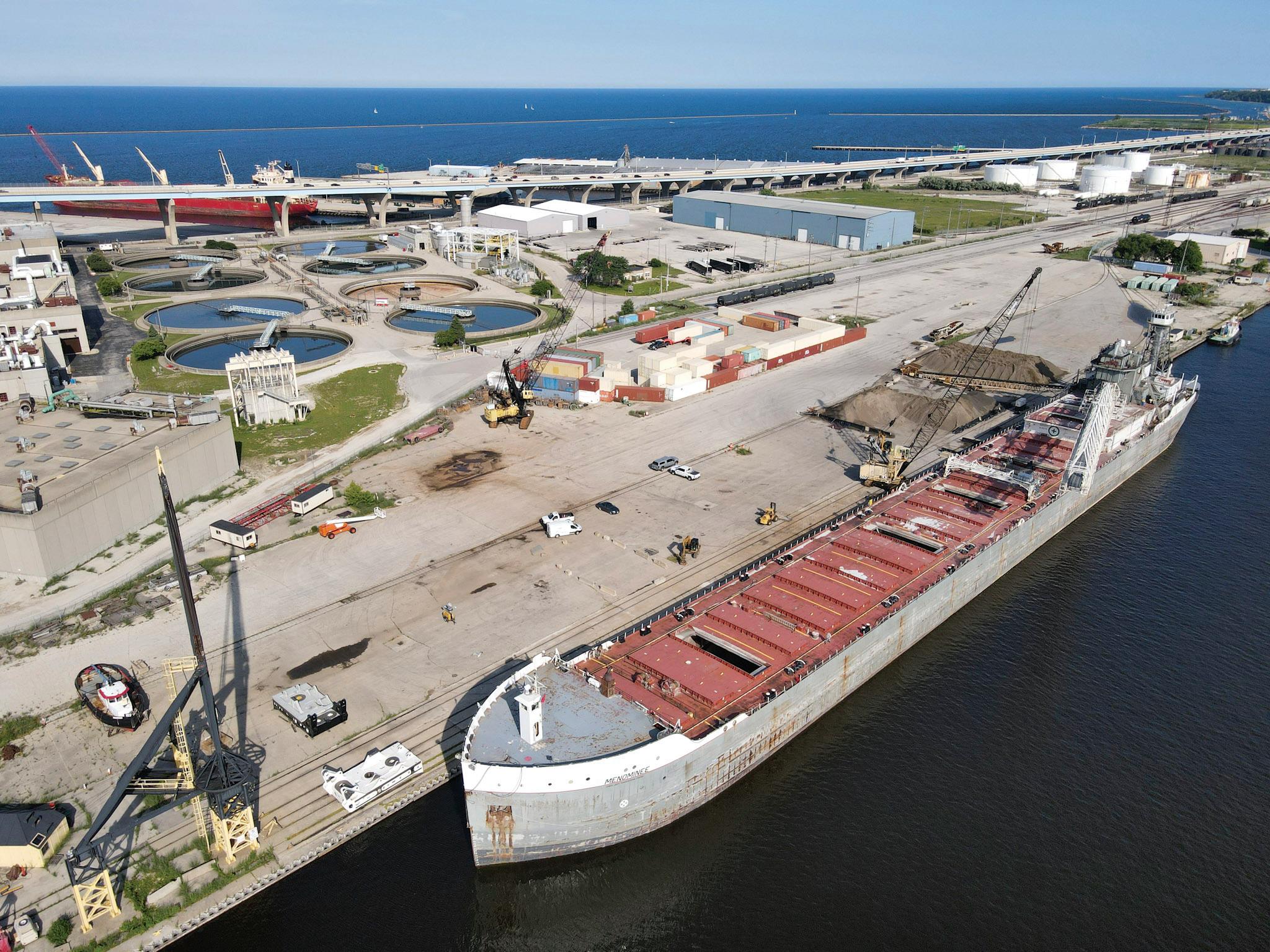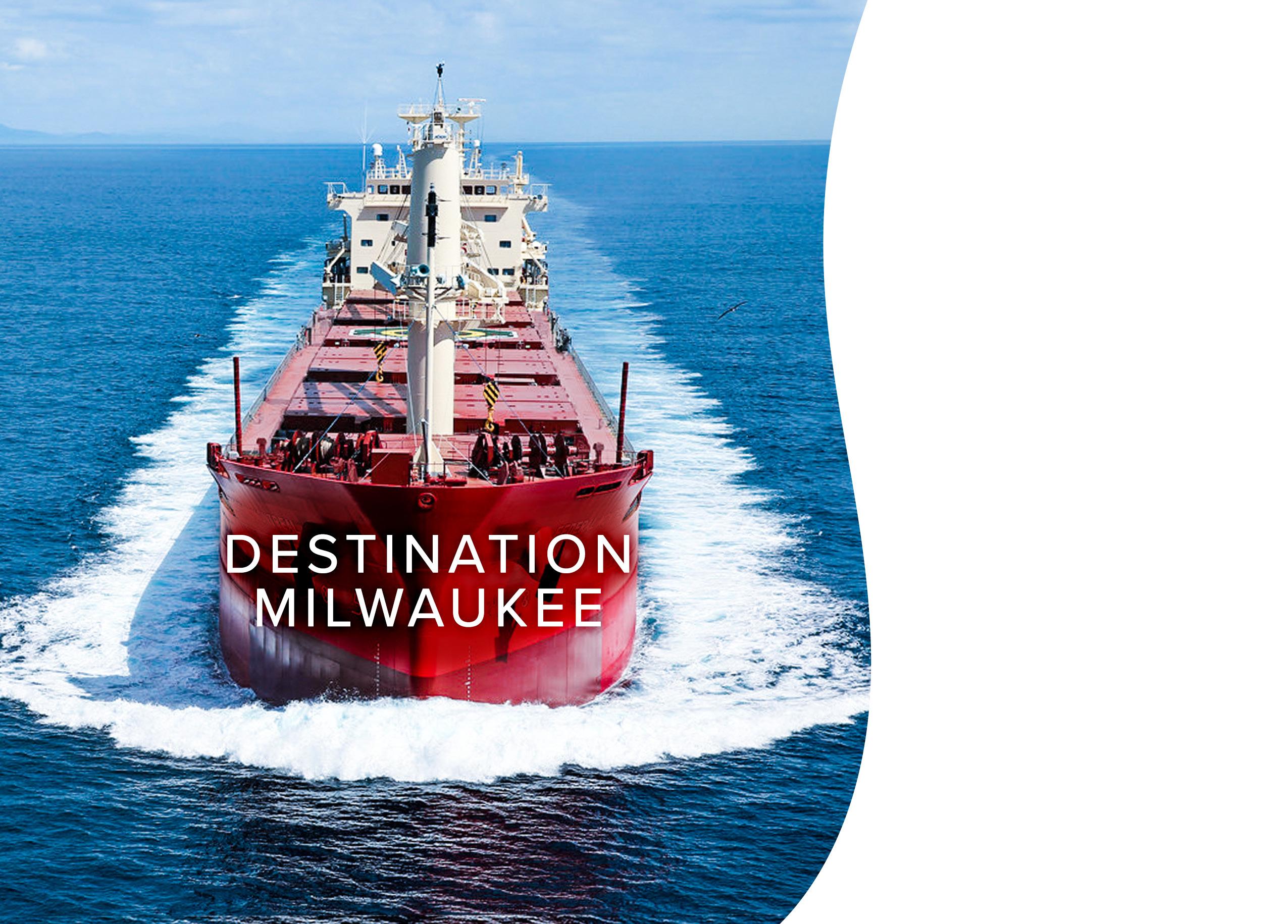
5 minute read
Port Milwaukee boasts flexibility and excellent hinterland connections
Port Milwaukee offers a commercial operational flexibility unique to the western Great Lakes, the St. Lawrence Seaway and the inland river system. The port is located on the western shore of Lake Michigan, about 75 miles north of the city of Chicago. It is 1,021 nautical miles from Montreal, Quebec with a transit time by water from Montreal of about four-anda-half days.
Port Milwaukee serves as a regional transportation and distribution centre with a primary market including the State of Wisconsin, northern and western Illinois (including the City of Chicago) and eastern Minnesota including Minneapolis and St. Paul. Port Milwaukee is also capable of cost effectively reaching Iowa, North Dakota, South Dakota, Nebraska, Missouri and Indiana, and the western Canadian Provinces of Alberta, Saskatchewan and Manitoba.
The port maintains a robust network of transportation partners within the region, including vessel and barge owners, rail operators, truckers, freight forwarders, and other beneficial owners of cargo, working together to design high quality, cost effective transportation and distribution programmes for both domestic and international supply chains.
Port Milwaukee personnel and tenants are thoroughly trained and experienced transportation and logistics professionals, to develop complete handling and transportation solutions for regional businesses.
Port Milwaukee is the northern most approved point on the Great Lakes with access to the Inland River System, providing direct access to Gulf Coast Ports including Houston and New Orleans via the Mississippi River.
Port Milwaukee is very well equipped to handle bulk, breakbulk, heavylift and liquid cargoes. It has 16 Seaway Max docks, including a heavy cargo dock. It can host a wide variety of vessels, including barges, Lakers, and Seaway Max vessels. The largest-sized vessels calling on Port Milwaukee would be Lakers at a length of 1,000ft. and width of 105ft.
Port Milwaukee handles a variety of dry bulk cargoes including salt, cement, bottom ash, fly ash, limestone, agricultural commodities and decorative stones. It also handles liquid bulk including butane, propane, ethanol and gasoline additives.
Cargo volumes fluctuate based on seasonality and customer demand.
Bulk cargoes are predominantly imported or domestic, however, exports are continuing to increase since the opening of a new agriculture maritime export facility
Port Milwaukee and its dry bulk stevedore Kinder Morgan offer a variety of equipment including cranes, conveying systems, front-end loaders and ship loader/unloaders
Liquid cargo at Port Milwaukee is handled via water, rail and truck. The port has a liquid cargo pier where commodities handled by water are loaded/unloaded via pipe to storage tanks at the Liquid Cargo Terminal.
In terms of storage, Port Milwaukee offers both covered and open storage facilities for its dry bulk commodities. These facilities include two 10,000-tonne domes, two 15,000-tonne domes, and 311,000ft2 of indoor storage, with a lifting capacity of 300 tonnes.
Port Milwaukee’s Liquid Cargo tenant has seven liquid bulk tanks and four compressed gas tanks with approximately 300,000 barrel storage capacity
Over the past five years, Port Milwaukee has averaged 1.8mt (million tonnes) of cargo throughput. This figure remains relatively stable, with some yearon-year fluctuation depending on weather and customer demand.
One of the great advantages of Port Milwaukee is its excellent hinterland connections, which are available via water, rail and road. Positioned on the western shores of Lake Michigan and the northern most point on the Great Lakes with access to the Inland River System, water connections can be made via vessel and barge.
The port has access to: two Class I railroads, Canadian Pacific v Kansas City and Union Pacific, service Port Milwaukee; and Federal Highway System I-94/ 794, v which leads directly into Port Milwaukee
Environmental issues are becoming more pressing in ports worldwide, and Port Milwaukee is no exception. In 2022, the port introduced its StewardSHIP programme offering discounts on dockage fees for ship owners that have implemented emission reduction practices and environmental improvements to their vessels.
The port maintains its Green Marine certification, and continually strives to meet more stringent and higher-level criteria.

Port Milwaukee is compliant with DNR, EPA and all local and state environmental standards.
The port works constantly to ensure that it remains competitive, and a good choice for its customers. It works closely with local and regional manufacturers, importers/ exporters, growers and producers.
Port Milwaukee staff and tenants are highly experienced and skilled in handling a wide-range of commodities including complex and specialty cargoes, which makes it competitive and attractive to customers. The port’s position on the Great Lakes and access to the inland river system provides a direct link to the North American Industrial heartland via multiple modes of transportation, including two Class I railroads, offering cost effective and efficient supply chains.
Port Milwaukee is open year-round and is operationally available 24/7.

HARNESS THE GLOBAL POWER OF A GREAT LAKES PORT.
Regional, national and international logisticians count on Port Milwaukee for a turnkey approach to solve their transportation and supply chain needs. Strategically located in the industrial center of the U.S., Port Milwaukee provides premier access to domestic and world markets.










